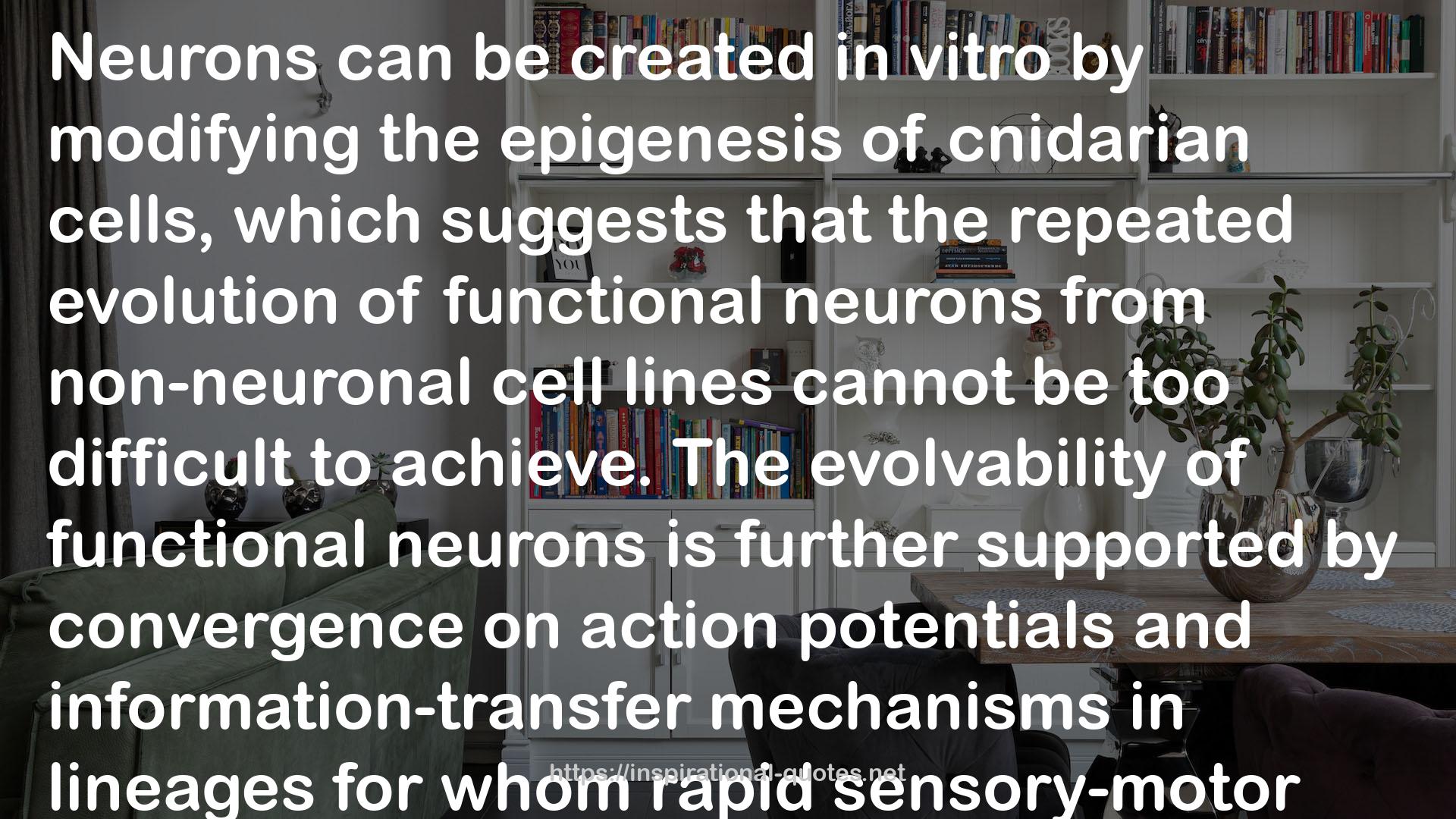" Neurons can be created in vitro by modifying the epigenesis of cnidarian cells, which suggests that the repeated evolution of functional neurons from non-neuronal cell lines cannot be too difficult to achieve. The evolvability of functional neurons is further supported by convergence on action potentials and information-transfer mechanisms in lineages for whom rapid sensory-motor mechanisms are either inaccessible or not required.
For instance, action potentials have evolved in the first major origin of complex multicellularity: the green plants, some of whom, such as the carnivorous Venus flytrap, are capable of limited rapid movements. Such 'real-time' plant behaviors are made possible by action potentials that are analogous in certain ways to animal nervous systems. Mechanosensory stimulus triggers sensory hairs, which then generate a propagating action potential that initiates a rapid motor response - such as the snapping shut of two leaf lobes, resulting in the imprisonment of hapless insect prey. Though the precise biochemical mechanisms of this snapping mechanism are poorly understood, it is likely achieved by gated ion channels, which produce a flow of water or acid molecules that cause cells in the lobes to change shape, causing the lobes, which are held under tension, to snap shut. A basic memory system is also employed: to avoid snapping shut due to noise (such as raindrops), the snapping mechanism is only initiated when two stimuli separated in time by a few seconds are detected. "
― , Contingency and Convergence: Toward a Cosmic Biology of Body and Mind
